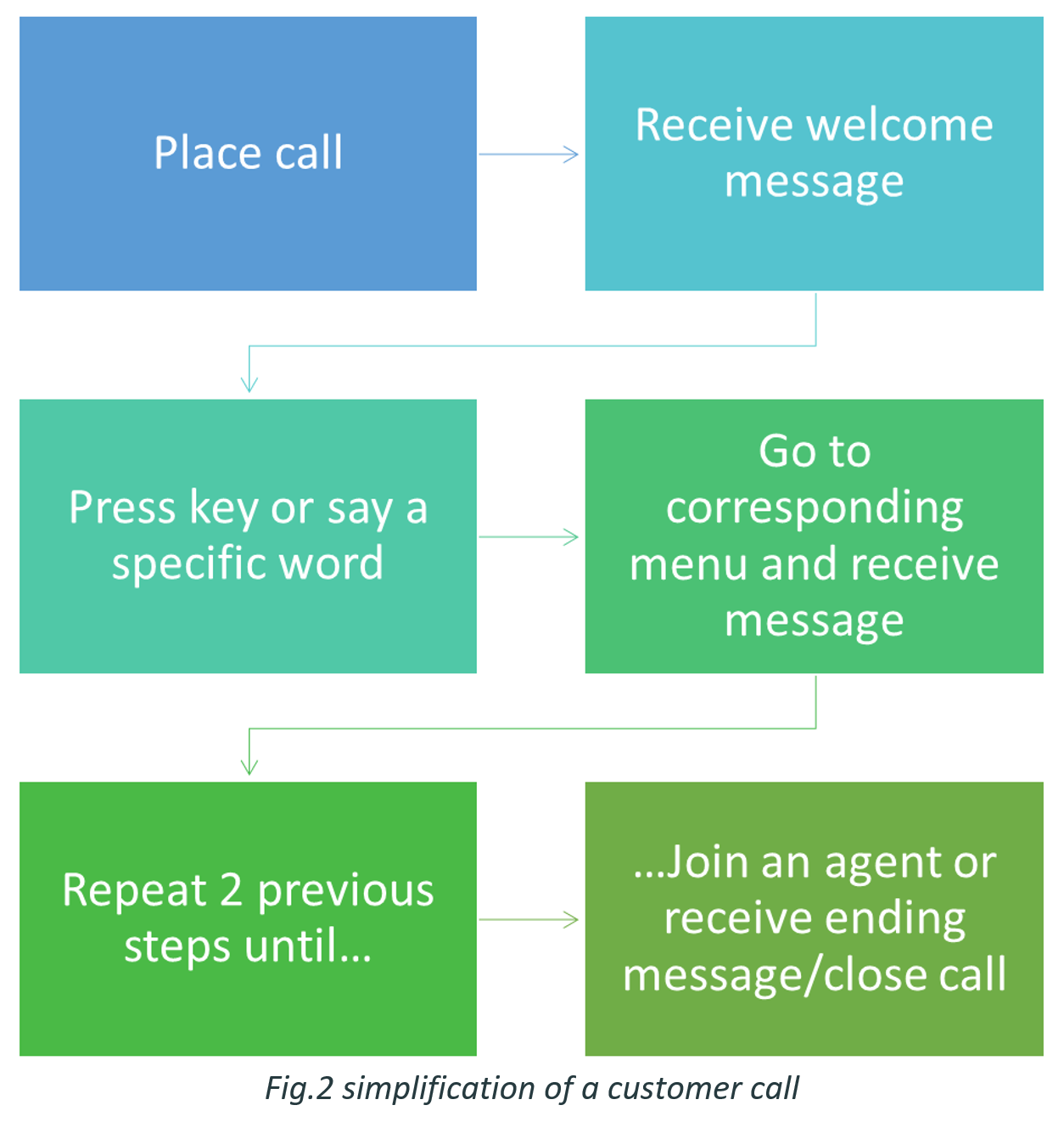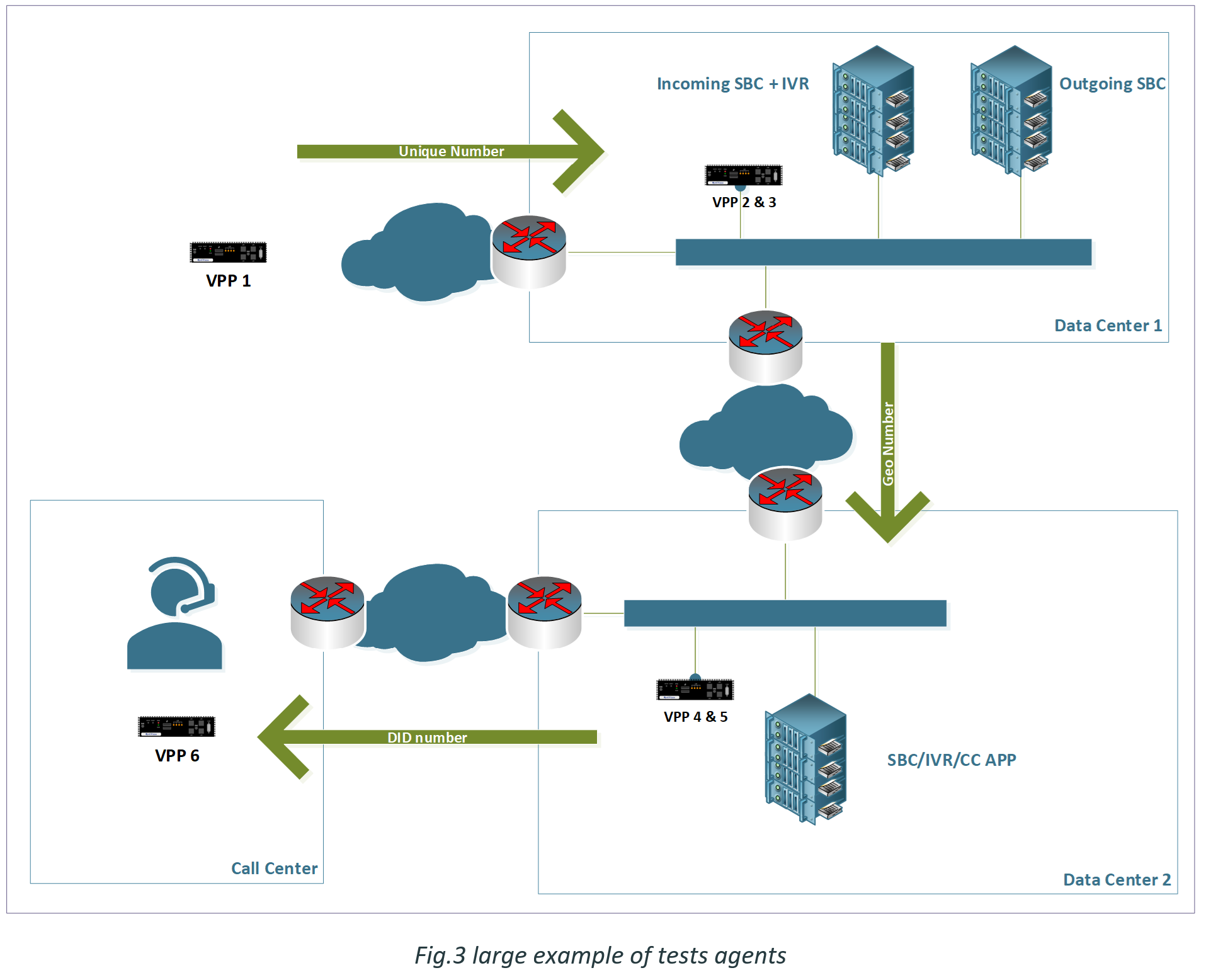IVR (stands for Interactive Voice Recorder)
An IVR (stands for Interactive Voice Recorder) is a voice call system that is driven through specific audio patterns or some phone touches (that sends DTMFs).
You may have faced an IVR each time you are trying to join your insurance company, bank or when you receive calls displaying audio as a welcome message.
Service centers are massively using IVRs to address the customer request to the right service or business unit.
Thanks to Opale Systems solutions, you get the capability to monitor IVR availability and global duration while navigating within the IVR tree, on a customer perspective.
You also reduce the time and head cost
while implementing new scenarios in validation process.
Challenges
Most companies are testing tree exploration using real humans.
This is a cost in terms of time and human resources each time an IVR configuration is made.
With MultiDSLA, Opale Systems permits you to automate the validation process.
Targets
For this context, you will be interested on Opale Systems solution if you are :
- IVR application server editor
- Call Center whatever the adopted solution : on premise solutions or cloud-based solutions.
- CC cloud-based provider
- And Operators
What do you need ?
What do you need ?
MultiDSLA
MultiDSLA is the cross platform that drives nodes able to place call, receive calls, send audio patterns, perform speech quality measurement on audio pattern, send tones and frequencies.
Nodes are acting like Humans with the capability to perform 24/7 tests with flexibility and scalability.
Flexibility : quickly adapt your test scenarios and produce new reports
Scalability : deploy nodes everywhere.
Nodes are software or hardware :
- VPP : is the reference softphone that embed various codec and all SIP messaging recording.
- DSLA : is a POTS line termination (to be connected as an analog phone) or balanced termination to be connected on a mobile, a laptop…
Example of Opale Systems
implementation
In this case, the customer wants to join the customer service managing his contract:
- After having dialed a phone number (usually a unique one), the customer receives a welcome message.
- Then he will be invited to navigate within the IVR tree so that his request could be directed to the corresponding customer service.
- Depending the service availability, the system will give an expected waiting time and put the customer on hold.
- It also happens that a closing message is sent saying that the customer will be contacted back or or inviting the customer to call back later due to agent unavailability.
How to emulate end users ?
VPP emulates customers as well as employees.
VPP can place, receive calls, play DTMF, record messages, perform Speech Quality measurements, etc.
- VPP1 emulates the customer.
- VPP2 and 3 can emulate the customer on different points of the first DC that handles unique phone baring.
- VPP4 and 5 can place calls towards VPP6 through the SBC and/or IVR
- VPP6 emulates the employee.
The exposed case is a specific use case with a coverage of the link-chain from Customer emulation on different point of the transmission chain and the emulated Agent.
For CC cloud-based solution, VPP positioned
within datacenters won’t be expected unless the CC cloud-based service provider
is proposing some services to Call Centers.
Working with speech recognition
MultiDSLA is using the Speech to text feature provided by Azure.
Speech recognition is part of a specific control event.
This control event is named “record.”
Within the tasklist :
- we play DTMF
- then we start recording what’s going inside the node
- then we wait for expected audio sample
- then we stop record and perform speech to text
Going to advanced tasklist generation or how to perform some conditional tests is not part of this document.
You can contact us if you are interested in IVR or CC testing with more features like conditional tests an reports.
Conclusion
With the flexibility and scalability of MultiDSLA you can make any IVR tests with a drastic time reduction and head costs.
Moreover, on production networks, you can perform 24/7 service ability and quality measurement to enrich your KPIs through brand new metrics like:
- Call Access Time: time from initial call setup, tree navigation and time to access to employee network.
- Then if the Service Level, based on time for an agent to take a call, you can compare this to CAT to pinpoint time to take call and time to transmit call.
- Tree Scenario Time: will be the time to follow a scenario within the IVR
- Call Global Quality : the end-to-end audio Quality on customer and Employee perspective.
MultiDSLA then can address pre-production to validate trees or server updates and quickly identify some issues as monitoring of subscriber or service providers.
Contact Opale Systems or your distributor for more information.

